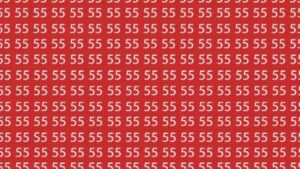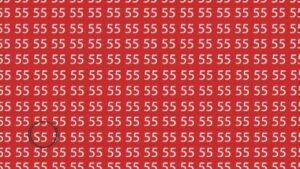The internet has been swept up by an optical illusion challenge that is difficult enough to leave most people puzzled within seconds. This brain teaser hides one distinct number among a cluster of repeating digits, pushing participants to test their observation speed and accuracy. Reports suggest that only a tiny fraction of individuals, approximately 0.9%, can identify the odd number instantly, making the puzzle one of the most shared viral challenges of the season. What looks like a simple grid of numbers at first glance has proven to be far more mentally engaging than it seems.

Why This Puzzle Captures Curiosity
Games of perception, particularly optical illusions, play into a human instinct to detect patterns and anomalies. Psychologists explain that when our brains are flooded with identical shapes or numbers, detecting the odd element demands an intense level of concentration. Unlike traditional puzzles, which require step-by-step reasoning, this sort of challenge draws from quick-fire visual cognition. The rush to solve it within the prescribed five seconds only adds to the sense of urgency, making the experience both fun and mentally stimulating.
A Five-Second Test to Spot the Difference
The instructions are straightforward: stare intently at the grid of 55s and find the one number that breaks the sequence. It could be another digit such as 5 appearing in reverse, a 15 instead of 55, or a subtle variation in placement. The trick lies in focusing without letting the sea of repeating numbers overwhelm your sight. Participants often freeze after a few moments, unable to resolve the visual clutter. This is precisely why so few succeed on their first attempt. The test is not simply about eyesight but about focus and controlled attention.
Social Media Buzz Around the Illusion
From TikTok trends to Instagram reels, this optical illusion has caught fire across social media channels. Users worldwide are attempting the challenge, sharing their attempts, and timing their responses. Many people post their reactions after failing to solve it within seconds, while some proudly showcase their success in spotting the odd number instantly. The energy surrounding the puzzle highlights the enduring popularity of interactive content that feels accessible yet uniquely competitive. With millions of views piling up daily, it shows how viral brain challenges can bring people together, even if only to compare who can outwit the illusion fastest.

The Science of Visual Attention
Cognitive scientists emphasize that puzzles like this highlight the limits of human visual attention. Our brains are wired to take shortcuts through pattern recognition, which usually helps us navigate daily life more efficiently. However, in tasks where anomalies are deliberately hidden, those shortcuts can work against us. The phenomenon, often called “inattentional blindness,” occurs when someone becomes so focused on the larger repeating pattern that they literally cannot register the subtle difference in front of them. This illusion is an accessible example of that striking cognitive limitation.
More Than Just a Puzzle
While at first this illusion feels like a light social media game, experts argue that these challenges train the mind in subtle yet meaningful ways. Increasing focus, improving observational skills, and engaging in rapid pattern recognition are all aspects tied to mental agility. For teachers, psychologists, and even employers, such puzzles serve as fascinating mini-experiments in real-world problem-solving and concentration. Whether you solve it instantly or struggle for minutes, the illusion demonstrates the balance between human limitations and strengths when it comes to focus, and it ensures one valuable takeaway—you should never underestimate the challenge of something that looks simple at first glance.
